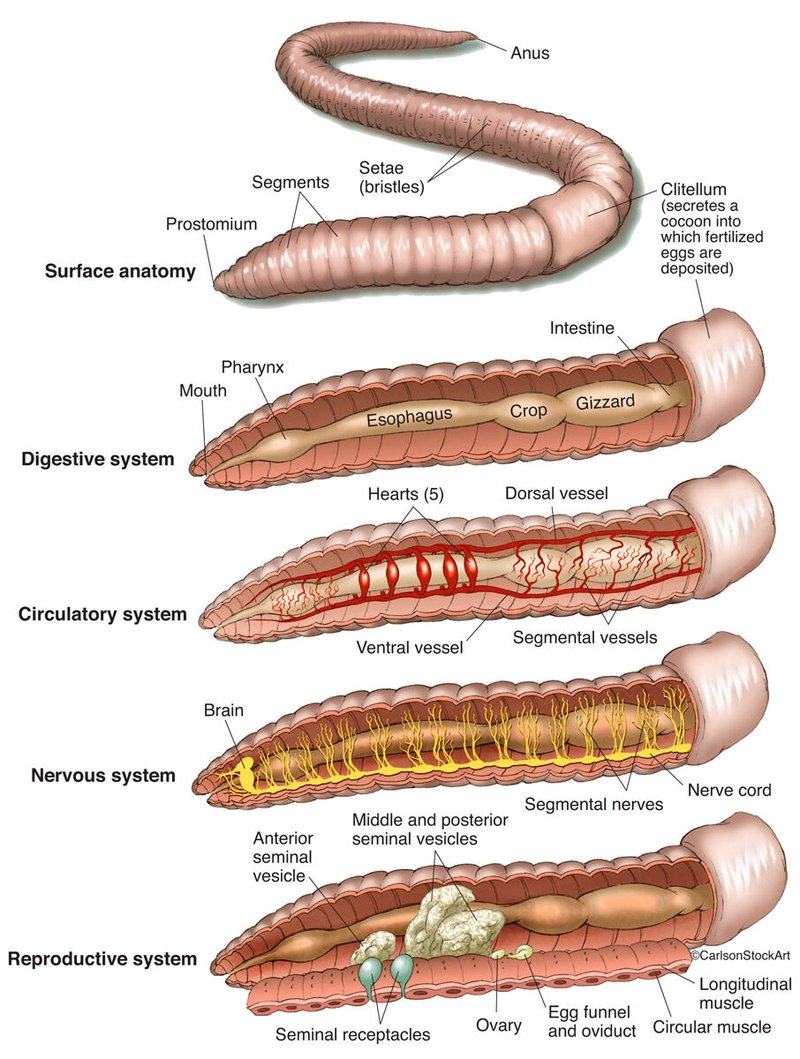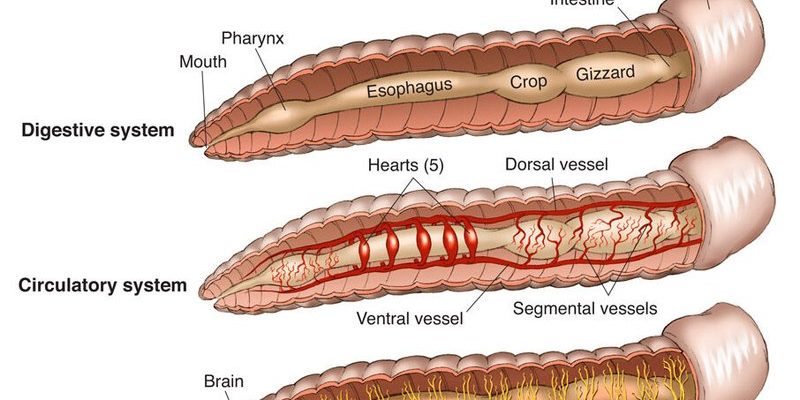
Today, we’ll unravel the mysteries of **earthworm anatomy**—from their segments to their setae and gizzards. By understanding the structure of earthworms, we can appreciate their vital role in our ecosystem a bit more. So, grab a cup of coffee, and let’s dig into the intricate world of these garden heroes!
Understanding Earthworm Segmentation
Earthworms are surprisingly complex creatures, and their bodies are divided into numerous segments—much like little train cars linked together. Each segment is called a *metamer*, and it plays a unique role in the earthworm’s life. You might be wondering, “Why segments?” Well, segmentation allows this worm to move effectively through the soil. As muscles in one segment contract, it elongates or shortens, letting the worm crawl forward smoothly.
Each segment is equipped with nerves and muscles that work together, allowing the earthworm to sense its environment and react accordingly. This segmented structure also means that if part of the worm gets injured, the other segments can often compensate, which is pretty handy!
Interestingly, the first few segments are different from the rest. They contain structures called *chaetae* or bristles, which are crucial for movement and stability. Here’s the thing: these segments help the worm push against soil particles and burrow deep into the earth, making them experts at aerating the ground.
The Role of Setae in Movement
Now, let’s talk about *setae*, those tiny bristle-like structures. You can imagine them like the rubber grips on the bottom of your shoes—they give earthworms traction. Each segment, except for the first one, has paired setae that help the earthworm anchor itself as it moves through the soil.
When an earthworm wiggles forward, it retracts its setae on the segments it’s moving from while extending the setae on the segments it’s moving to. This process allows the worm to grip the soil and pull itself along. Honestly, it’s a pretty cool system!
Setae also help earthworms navigate their world. They can sense vibrations and changes in their environment, which is vital for avoiding predators or finding food. Think about how you’d feel with a sense of touch all over your body—it’d give you a lot of info about what’s happening around you!
The Gizzard: Nature’s Food Processor
So, now we’ve reached the *gizzard*, one of the most interesting parts of an earthworm’s digestive system. Located just behind the stomach, the gizzard acts like a natural food processor. It grinds up the organic material the worm consumes, which primarily includes decomposing leaves and other plant matter.
Imagine having a super-efficient blender in your stomach—this is pretty much what the gizzard does! With strong muscular walls, it churns the food, breaking it down into smaller pieces so that nutrients can be absorbed easily in the intestine.
The gizzard doesn’t work alone; it often contains tiny stones that help grind the food even more. This process is essential for the earthworm’s nutrition and helps to return vital nutrients to the soil. It’s like recycling at its best, contributing to healthier plants and a thriving ecosystem.
The Circulatory System: A Close Look
Earthworms have a closed circulatory system, which is pretty neat for such small creatures. This means their blood is contained within a network of vessels, similar to how our veins and arteries work. This system is essential for transporting nutrients, gases, and waste throughout the earthworm’s body.
What’s fascinating is how their blood is rich in hemoglobin, which helps transport oxygen. While we breathe in air, earthworms absorb oxygen through their skin. Yes, they can “breathe” through their skin! However, this only works if their skin remains moist, which is why you often find them in wet conditions.
This circulatory system helps earthworms thrive, ensuring they can gather energy from the food they eat and be active in their underground habitats.
Nervous System and Senses
Earthworms might not have eyes like we do, but they do have a simple nervous system that helps them navigate their world. They rely on light-sensitive cells located in their skin to detect changes in illumination. This is why they often stay buried in the ground where it’s dark and moist.
The nervous system also includes a pair of cerebral ganglia, often referred to as a “primitive brain.” This helps process information from their surroundings, allowing the worm to react quickly to dangers like predators. You know how you instinctively jump back when you see a spider? Earthworms have a similar response—though theirs is more about staying underground!
Their ability to sense their environment, combined with the muscular segments and setae, allows them to move efficiently and avoid threats. This adaptability is part of what makes earthworms resilient creatures in diverse habitats.
The Importance of Earthworm Anatomy
Understanding the anatomy of earthworms allows us to appreciate their role in the ecosystem even more. These little creatures are not just about movement and reproduction; they are essential for maintaining healthy soil. By aerating the ground and breaking down organic material, they enrich the soil, promoting plant growth.
Farmers and gardeners often recognize the benefits of earthworms, sometimes even calling them “nature’s plow.” Their tunneling helps water and nutrients reach plant roots more effectively. As they eat through soil and organic matter, they also help create humus, a crucial component for fertile soil.
So, the next time you see an earthworm, remember that its sophisticated anatomy is working hard beneath the surface, helping nurture the environment. It’s pretty cool to think about how such small creatures can have such a big impact, isn’t it?
Earthworm anatomy is a fascinating topic, full of intricacies that show how these organisms are so well adapted to their underground lifestyle. From their segmented bodies to their grinding gizzards and helpful setae, each aspect plays a critical role in their survival and, ultimately, the health of our ecosystems.
Next time you’re out in nature or even just tending to your garden, take a moment to appreciate the humble earthworm. They might be small, but they pack a punch when it comes to maintaining soil health and supporting plant life. So, let’s celebrate these slimy friends and their incredible contributions to our planet!

